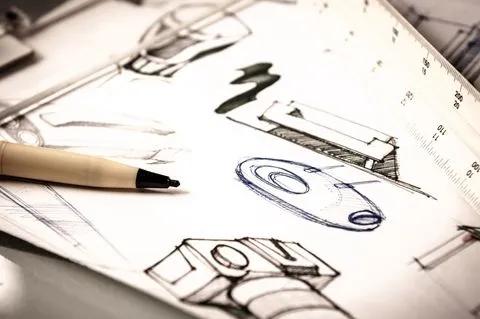Crucial, Yet Often Misunderstood: The Industrial Design Profession
How many of you have heard of industrial design? 20 years back in Malaysia, when I talked about industrial design, people would ask, “Do you mean interior design?” It’s not the same now. In an era not known for great industrial designers, Steve Jobs’ partnerships with Hartmut Esslinger and Jony Ive in 1997 created an engineering and design aesthetic that set Apple apart from other technology companies. Through research, observation and insight collection, industrial designers provide solutions that enlighten the rest of the design process.
Did you know? Every object you interact with daily, from the smallest paperclip to a car, results from an industrial design process.
Industrial design is also called product design. Industrial design is the professional practice of designing transport, services, and products such as housewares, furniture, consumer electronics, toys, accessories, sports, and recreation used daily by people worldwide. Industrial designers emphasise functionality, human ergonomics, sustainability, material innovations, corporate branding, appearance, and product manufacturability. Combining these design criteria brings lasting value and experience to a product or service.
Industrial designers make many decisions during the design process to improve the quality of our lives through well-executed design. In the early design stage, industrial designers will brainstorm the design problem, list out possibilities, sketch, create mockups, render 3D models, make prototypes, and test ideas to find the best design for a user’s needs. The design phase is fast-paced and challenging yet exciting! Through countless hours of testing and experimenting, industrial designers rebuild mockups to understand the aesthetic of a product, its function, and how it can be produced. In the last design stage, industrial designers collaborate with engineers, manufacturers, and material scientists to bring ideas to life. A branding strategist will join in the later process before the product reaches the end users.
Today, industrial designers collaborate with multidisciplinary teams of branding experts, graphic designers, engineers, user interface (UI) designers, user experience (UX) designers, product strategists, customers, and manufacturers. This allows them to comprehend a design problem thoroughly and then propose a user-centred design (UCD) that caters to the exclusive needs of a user and leaves an enduring impact on the user experience.
According to the Industrial Designers Society of America (Sept 2021), there are more than 31,500 working industrial designers in the United States, and the median annual salary is $71,640. An industrial designer masters various skills such as 3D modelling, 3D rendering, drawing and sketching, rapid prototyping and testing, basic engineering and fabrication, programming, manufacturing processes, and visual storytelling. The industrial design profession is evolving and growing to keep pace with cultural trends, technology, and socio-economic forces.
In the past, industrial designers in Malaysia faced challenges. One of them is that this profession is not well-known, obliterating many development chances for them. Many industrial designers turned out to be interior designers because the market recognition was low. The good thing is the trend has changed. Malaysians realised the importance of industrial design, which brings ideas to life through production, fulfilment, and marketing. We used to have only a handful of accredited higher academic institutions that provide industrial design education. In 2022, 26 universities in Malaysia are available for those who wish to study industrial design. Malaysian industrial designers can now register as professional members under Pereka Malaysia, established in 2012.
Do you now want to be a successful industrial designer like Steve Jobs?
Dr. Nicole Fu Chew Xiang
School of Arts
Email: @email




